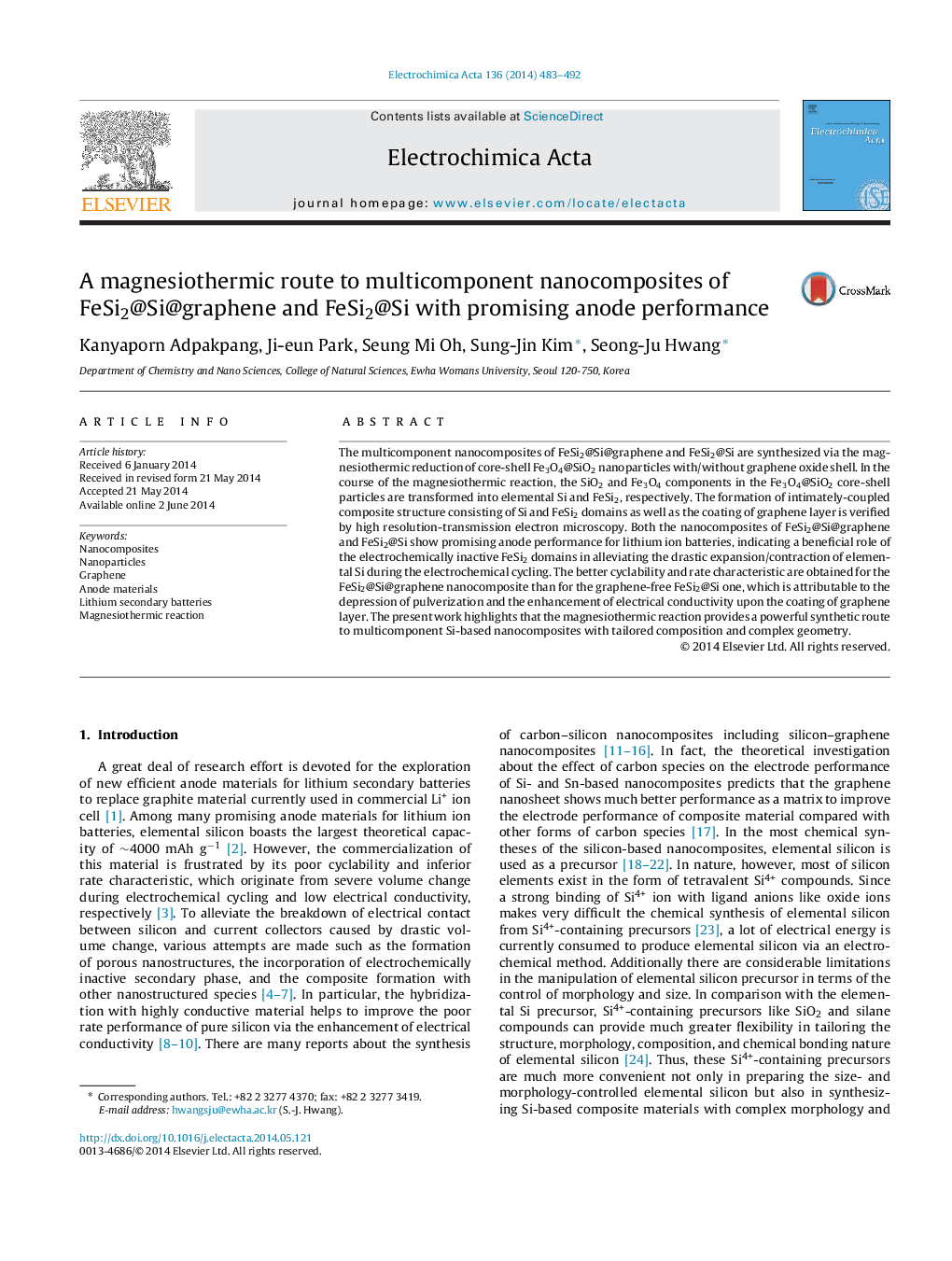| Article ID | Journal | Published Year | Pages | File Type |
|---|---|---|---|---|
| 185437 | Electrochimica Acta | 2014 | 10 Pages |
The multicomponent nanocomposites of FeSi2@Si@graphene and FeSi2@Si are synthesized via the magnesiothermic reduction of core-shell Fe3O4@SiO2 nanoparticles with/without graphene oxide shell. In the course of the magnesiothermic reaction, the SiO2 and Fe3O4 components in the Fe3O4@SiO2 core-shell particles are transformed into elemental Si and FeSi2, respectively. The formation of intimately-coupled composite structure consisting of Si and FeSi2 domains as well as the coating of graphene layer is verified by high resolution-transmission electron microscopy. Both the nanocomposites of FeSi2@Si@graphene and FeSi2@Si show promising anode performance for lithium ion batteries, indicating a beneficial role of the electrochemically inactive FeSi2 domains in alleviating the drastic expansion/contraction of elemental Si during the electrochemical cycling. The better cyclability and rate characteristic are obtained for the FeSi2@Si@graphene nanocomposite than for the graphene-free FeSi2@Si one, which is attributable to the depression of pulverization and the enhancement of electrical conductivity upon the coating of graphene layer. The present work highlights that the magnesiothermic reaction provides a powerful synthetic route to multicomponent Si-based nanocomposites with tailored composition and complex geometry.
